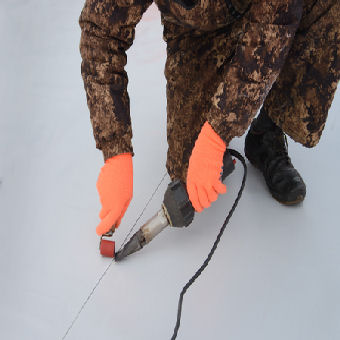An elastomeric roof coating provides an extra layer of protection to your existing roofing system. To see all the benefits of this roof coating, it’s necessary to ensure it is applied properly and evenly. Failure to ensure proper installation can result in vulnerabilities that can be expensive to repair down the road.
Keep reading to learn more about an elastomeric roof, including the pros and cons you can weigh to determine if this is a smart option for your building.
What Is Elastomeric Roofing?
Elastomeric roofing is a liquid-applied coating that is made from acrylic or silicone. When cured, it creates a highly elastic, durable membrane. The elastic quality of the coating makes it simple to apply to most roof materials. It can also be used in many different types of weather conditions.
It’s possible to apply this coating to a new roof to provide additional weatherproofing or to an older roof to help extend its lifecycle, the integrity of the roof, and to seal leaks.
Pros of Installing Elastomeric Roofing
The top benefits of installing elastomeric roofing include:
Increased UV Protection and Energy Efficiency
When applied properly and fully cured, elastomeric roof coatings provide a “cool roof.” During the hotter months of the year, this helps to reduce your energy costs.
Additional Weathering and Waterproofing Protection
An elastomeric roof coating also offers a highly effective shield against ice, snow, rain, and more. The coating will provide additional reinforcement for your roof, which is beneficial in areas prone to high winds.
Easy to Maintain and Repair
If vulnerabilities appear in the elastomeric coating, they are easy to repair. In fact, all you must do is reseal the affective area by applying more of the coating.
Extend the Lifespan of Your Roof
When the coating is applied properly, it can help extend the lifespan of your roof significantly. In most cases, roofs will get an additional 10 to 20 years with this coating.
Cons of Installing Elastomeric Roofing
The main disadvantage of installing elastomeric roofing is if the coating is not applied evenly or correctly. If this happens, your roof system may be vulnerable to the elements.
Additionally, since this does represent an investment, there is always the temptation to “cut corners.” As mentioned above, breaks or holes in the coating can result in moisture penetration and long-term damage. Also, sometimes a base or primer coat will be required.
Due to the thickness of the coating, some people complain it has a plastic or rubberized appearance.
Is Elastomeric Roofing Right for You?
It’s important to carefully weigh the pros and cons to determine if elastomeric roofing is right for you. Learning more about it (like with the information here) is a step in the right direction.
If you have more questions or if you want to schedule this service, get in touch with roofing professionals by calling (931) 220-1728. We are happy to help with all your roof needs.

